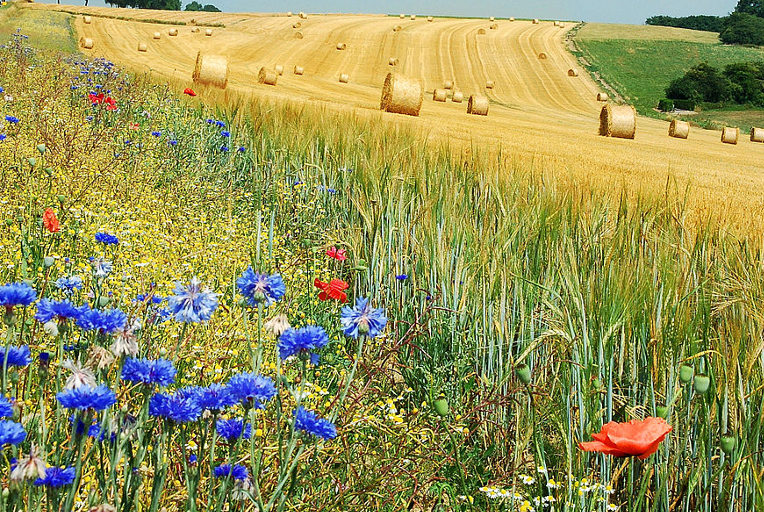Farmers around the world are looking for innovative methods to save water, reduce costs and produce higher yields. No-till farming is a popular practice to improve soil quality and reduce soil erosion. Instead of using a plow to disturb soil before planning, it employs a drill or alternative equipment to grow crops without breaking the ground.
Is no-till growing as great as it’s made out to be? Should it be adopted by all to help the Earth? The answer is yes and no. What it really comes down to is the type of no-till farming, and whether it is being used in collaboration with other environmental conservation practices.
In the United States, most no-till cultivation is conventional and uses a drill to plant monocultures like corn and soybeans. This method actually requires more herbicides than regular tillage.
However, there is another type of no-till farming that depends more on supporting the natural ecosystem and minimizing disruption to the soil. Regenerative agriculture is all about returning carbon to the ground instead of farming it out.
Excessive tilling harms soil and causes all sorts of issues, including waterway pollution, nutrient loss and releasing carbon into the atmosphere. If more farmers instituted no-till growing in conjunction with other erosion control methods, the environmental impact of agriculture would be much less.
What Is Tillage?
In conventional agriculture, farmers use a plow to break up soil 8-12 inches down to prepare the land for planting. If you compare this practice to how you ready raised beds for a garden, you might think breaking up the soil would make it easier to plant crops, including vegetables and grains. However, this releases large amounts of carbon, disrupts vital microorganisms in the ground and causes soil erosion.
How No-Till Works
No-till farming leaves topsoil intact, making it less vulnerable to runoff and nutrient loss. In some practices, farmers will till for crops only once, and then simply remove plant debris at the end of the growing season without disrupting the soil.
Modern farming implements enable farmers to plant faster without needing to prepare the ground. However, most no-till operations also require the use of herbicides to manage weeds before planting, making it important to distinguish between the main types of no-till farming, conventional and organic.
Conventional vs. Organic
Conventional no-till is the most widely utilized practice around the world. It’s essential to differentiate between no-till growing that uses chemicals and that which employs more sustainable methods.
Conventional no-till may help prevent soil erosion, but it is arguably just as environmentally detrimental to agricultural land. It’s mainly used in monoculture cash crops, such as corn and soy. Farmers must use more herbicides to kill weeds that would normally be destroyed during tilling. Then they need to rely on herbicide-resistant genetically modified crops.
In contrast, organic no-till is more than just cultivating crops without chemicals. Many organic growers opt to till land only once, prepping beds with extra compost and other nutrients, and then spot-weed. Organic farmers also use a variety of cover crops they plant their main crop into, including buckwheat, spring oats, winter rye, fava bean and field peas.
Some large-scale growers opt to use special tractor implements that help weed fields before planting the main crop. Innovative technology within organic agriculture plays a huge role in advancing more sustainable no-till growing practices.
Regenerative Agriculture and No-Till
As of 2019, one-fifth of agricultural acres in the United States were no-till. The majority of this land is conventionally farmed, using additional herbicides and genetically modified crops to increase production while keeping costs low.
However, more farmers are moving toward alternative options. Organic no-till growing boosts the soil’s microorganisms to fight disease and weed pressure, and promotes healthy crops. It also implements alternative methods of handling weeds, such as planting the cash crop into a cover crop. Used collectively, these growing practices are known as regenerative agriculture.
Implementing no-till farming as a key function of regenerative agriculture may help save the earth. Some farmers are working to go beyond just using fewer chemicals. Implementing additional environmental conservation practices, like cover crops, riparian buffers, interspecies planting and beneficial insects, can create a growing space that does not need to be maintained by chemicals.
Traditional tilling methods caused historic soil erosion and runoff issues in the United States throughout the 20th century, and something had to change. As agriculture seeks new ways to limit environmental impact and feed a growing population, it will be imperative that we take regenerative agriculture further, exploring new methods that use fewer chemicals and improve the soil.
Teaser photo credit: By I, Luc Viatour, CC BY-SA 3.0





